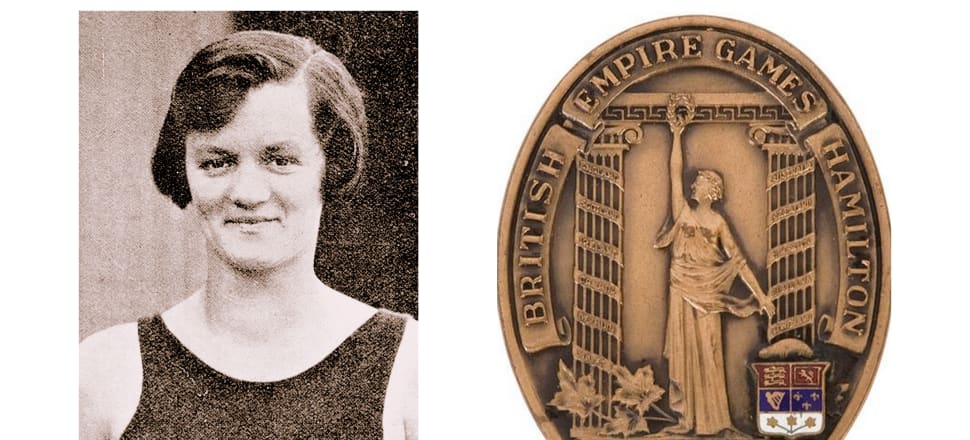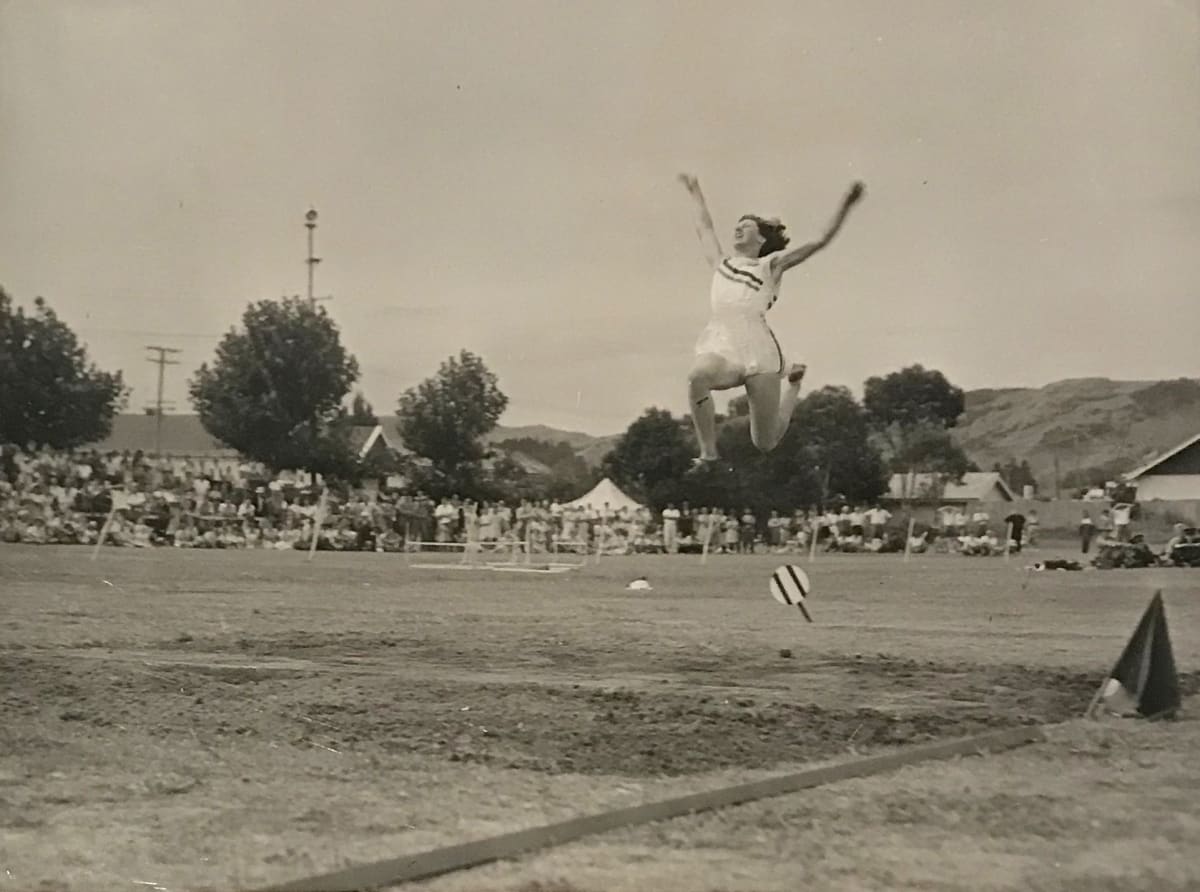
The first NZ woman to compete at a Commonwealth Games in 1930, Gladys Pidgeon was almost barred from the pool. Angela Walker looks back at her remarkable journey to Canada, and the legendary Kiwi athletes who followed in her wake.
What might swimmer Gladys Pidgeon have thought if she were still alive to witness this year’s Commonwealth Games in Birmingham?
As the first New Zealand woman to attend a Commonwealth Games – 92 years ago – Pidgeon may have been amazed to see women winning more medals than men at this year’s event (more on that later).
Back in her day, Kiwi women were almost banned from taking part.
Fortunately, Pidgeon got to compete at the inaugural 1930 British Empire Games, as the Commonwealth Games were originally named – though she was the only female selected for the 22-strong New Zealand team for Ontario, Canada.
Even then, her selection was far from straightforward.
The first roadblock Pidgeon faced was a decision by the New Zealand Empire Games Committee deeming sportswomen could not be nominated. The Auckland Swimming Centre protested the ruling, as reported in the Auckland Star under the headline: “Women barred?”
The article (on April 29, 1930) quoted Mr Mulvihill of the Waitemata Club: “The centre will be neglecting its duty towards women swimmers of the past, present and future if it does not take some action in the matter,” he said.
The swimming centre’s Mr Kenny was also quoted: “I regard this as a slur on the character of our New Zealand girls,” he said. “The action they propose would be a serious blow to the popularity of swimming, and to any sport in which women take part… The centre urges the council of the New Zealand Amateur Swimming Association to leave no stone unturned to secure the removal of the restriction.”
Combined efforts produced a new decision – women swimmers would be eligible for the Empire Games on the proviso they found the necessary funds, including the expenses of a chaperone. The idea that Pidgeon, a 24-year-old unmarried woman, could travel across the world with only male teammates was unthinkable to the powers of the day.

Pidgeon's mother, Jane, duly agreed to act as “chaperone”, despite this compounding the family’s expenses.
The Auckland Swimming Centre tried to assist once again, this time by organising a swimming carnival to raise funds for Pidgeon and fellow swimmer Gordon Bridson. However, Bridson was to take precedence, they said, if the full amount required wasn’t raised. It wasn’t, leaving Pidgeon and her mother to fund the shortfall.
Pidgeon arrived at Auckland’s Princes Wharf on July 1, 1930, smartly dressed in her New Zealand team uniform, sporting a de rigueur Marcel wave hairdo beneath her hat. She and her mother boarded the two-funnel Aorangi along with the rest of the team. Auckland’s Milne & Choyce department store, where she worked as a clerk, had agreed to give her three month’s leave.
Quietly making sporting history, Pidgeon stood behind the ship’s rail near the gangway and waved her goodbyes over the enormous bouquet she was clutching. A floral horseshoe was pinned to her lapel for good luck. Far below, the gathered crowd waved and sang farewell songs.
An Auckland Star reporter brought the scene into focus: “It was just a quarter after eleven o'clock when the tinkling of the engine room telegraph set the passengers waving with renewed vigour … A thousand coloured streamers parted as the gap between ship and wharf widened and there was a fluttering of handkerchiefs … when the clock in the Ferry Building struck the half-hour the Aorangi, with the cream of Australia's and New Zealand's athletes on board, was well on her way toward North Head.”
The Aorangi pointed its bow towards Suva, where Pidgeon had a brief opportunity to train at the Suva Swimming Club. After further stopovers in Honolulu and Vancouver, the team traversed Canada by train, finally arriving in Hamilton on the shores of Lake Ontario, near Niagara Falls.
Competing in the Empire Games pool in Hamilton, Pidgeon wore an innovative, new swimsuit made from specially woven New Zealand wool.

In a letter to her coach, she penned: “The ‘Maclone Speedo' costume which you recommended me to wear is just wonderful … the improved cut of the back is excellent and allows that extra freedom … absolutely vital to speed … as it is an all-New Zealand production … you are helping everyone in the Dominion from the sheep-owner onwards.”
Perhaps the new textile helped Pidgeon make the final of the 200 yards breaststroke where she placed a creditable sixth.
More than that, as New Zealand’s sole female representative at the first Commonwealth Games, she created a pathway for future Kiwi sportswomen. (Pidgeon retired in 1931 after winning her sixth national title and married the following year, becoming Gladys Marley.) She died in 2002, aged 96.
While no Kiwi women were sent to the 1934 Empire Games, nine were included in the team of 71 that contested the Games in Sydney, 1938. (With the Games so close to home, the New Zealand team was three times larger than any previous team.)
Three Kiwi sportswomen made history in Sydney by becoming the first to win Games medals: swimmer Mona Leydon, high jumper Betty Forbes, and 80 yards hurdler Rona Tong all won bronze.
Tong missed out on the gold medal by just one-tenth of a second. In a photo of the medallists on the podium, Tong’s hurdling shorts were tellingly longer than those of winner, South African Barbara Burke.
Tong, who later became Rona McCarthy and lived until months before her 100th birthday, told Hawke’s Bay Today in 2010 that she’d asked a leading South African hurdler for advice while competing in Sydney.
“He couldn’t fault me but he said I had one problem – ‘You need your shorts to be three inches shorter’,” she recalled.
The Second World War put paid to any Olympic or Commonwealth Games in the following decade.

However, history was made in Auckland 1950 when Yvette Williams became the first New Zealand woman to win an Empire Games gold medal, in front of a delighted home crowd at Eden Park. The significance of the moment was not lost on Williams.
“First New Zealand girl ever to win an Empire Games title. Biggest thrill of my life,” she noted in her diary.
Williams experienced an even bigger thrill when she became the first New Zealand woman to win an Olympic gold medal – exactly 70 years ago at the weekend.
My recently released book – Ideals Are Like Stars: The Dame Yvette Williams Story - includes a chapter on the astonishing day she won two gold medals simultaneously, in discus and long jump, at the 1954 Empire Games in Victoria. During her athletic career, Williams won a total of five Empire Games medals in four different events.
That mind-bending feat was subsequently topped by Val Young. She holds the record for the most Commonwealth Games gold medals ever won by a New Zealander – five.
Over the course of an international career that spanned from Cardiff 1958 to Christchurch 1974, Young won seven Commonwealth Games medals in total, in the shot put and discus events.
As more events for women were added to the Commonwealth Games programme (swimming was initially the only option), more and more Kiwi sportswomen emulated the feats of Tong, Williams and Young. Many went on to become coaches and sports administrators, committed to the evolution of women’s sport.
One such leader is Katie Sadleir, New Zealand’s 1986 Commonwealth Games bronze medallist in synchronised swimming, who is currently the chief executive of the Commonwealth Games Federation in charge of this year’s event.

Birmingham 2022 is set to make global history by being the first major multi-sport event to award more medals to women than men. The event will celebrate the progress sportswomen have made, acknowledging the barriers that have been cleared and those still to be overcome.
In the largest New Zealand team ever sent to a Games, 234 athletes, more than half are women (124) – the largest percentage of women to ever represent New Zealand at a Commonwealth or Olympic Games.
Once the Birmingham Games are officially opened on July 29 (NZ time), new names will join the list of extraordinary champions like Val Young and Yvette Williams – a list that began thanks to the tenacity of trailblazer Gladys Pidgeon and her supporters.
*The 2022 Birmingham Commonwealth Games opening ceremony gets underway at 5am (NZT) this Friday, with the first Kiwis competing later in the evening. All the action screens live on Sky Sport across six Birmingham 2022 channels, with free-to-air coverage on Prime.







